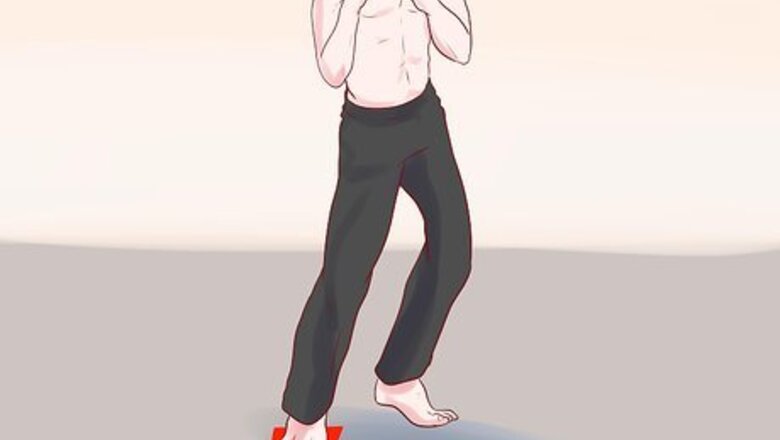
views
Working On Your Form
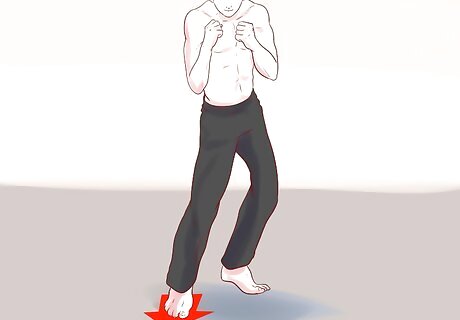
Assume the right stance. The positioning of your feet and legs is central to punching well, since punching involves your entire body. Position your feet a little wider than shoulder-width apart. Bend your knees a little so you'll be able to rotate toward your target with ease and throw your weight behind your punches. If you're punching with your right hand, your right foot should be slightly set back with the heel lifted. If you're punching with your left hand, your left foot should be slightly set back with the heel lifted. As you punch, your feet will pivot in the direction of the punch. They should not leave the ground when you're throwing a power punch. If you lift your feet, you're taking some of your body weight out of the equation, and your punch won't be as strong.
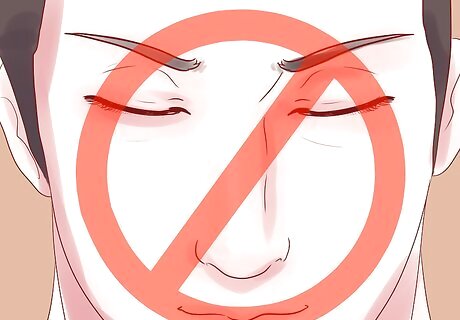
Keep your eyes on your target. Your focus should never leave your target. Never close your eyes or look away; in order to aim correctly and execute the punch with power and precision, stay completely focused. Tuck in your chin a bit so that when you punch, your chin is protected by your punching arm.
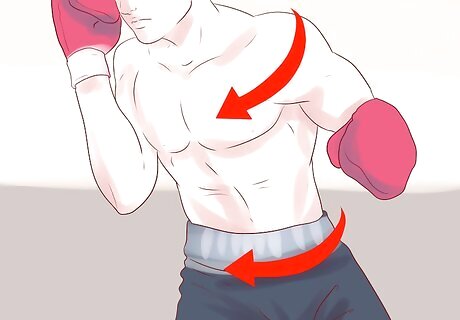
Generate force from your hips and torso. As you begin your punch, rotate your hips and torso toward your target. Try to position yourself so that the rotation is as complete as possible, even if you're very close to your target. Your punch will be stronger if you're able to rotate completely, rather than doing a smaller pivot. You should really feel the weight of your body going into the punch. As you practice punching, pay attention to your hips. Spin them quickly and forcefully toward your target as though you were going to hit your target with your hips instead of your fist. This will help you generate the power you need for a strong, fast punch. As you rotate, you shouldn't need to lean forward or reach. If you have to reach to far to hit your target, you'll lose power.
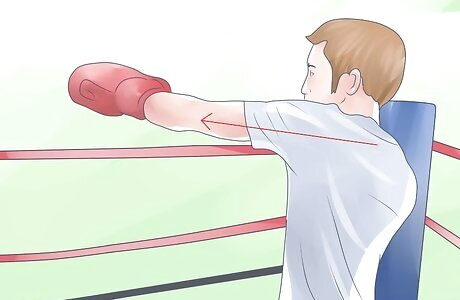
Spring your arm forward. Keep your shoulders loose until you're ready to punch, then spring your arm forward so that you can easily reach the person you're punching. Keep your hand relaxed until your arm is in motion, then make a fist so that your punch has a hard impact. When you make a fist, tuck in your four fingers. Make sure your thump wraps around the fingers, so it won't be caught up in your punch. Wrapping your hands before you get started will help you avoid injury and make your punch more powerful. Don't cock your fist before you punch, since this lets your opponent in on your plan before you get the chance to hit. This is called telegraphing, and it results in lost matches.
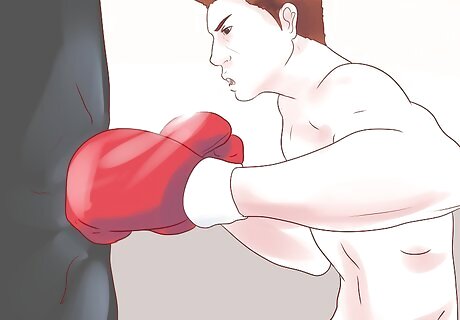
Connect and exhale. When you make contact with your target, exhale sharply. It might take some practice to time your breathing so that you exhale with every punch, but it's worth the effort to get in the right breathing rhythm. Inhale before the punch and exhale as you deliver it, throwing every bit of your body's energy into the hit. After you deliver your punch, spring back into position for the next one. Remember to keep your chin tucked in so that you're prepared for a counter punch if it comes.
Enhancing Your Speed and Power
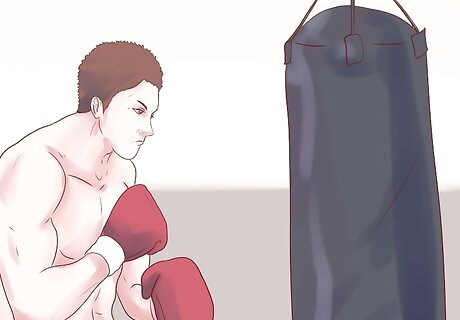
Take range into account when you're punching. You should only throw a punch when you're in perfect range to do so with the most power possible. That means being close enough to deliver the punch without leaning or reaching forward. You should be able to connect with your arm outstretched, but not overextended. When you have to lean forward to complete a punch, a significant portion of your punch's power is lost. Practice using a punching bag until you're clear on how far you should stand from your target when you're punching. The distance will depend on the length of your arm and your range of motion.
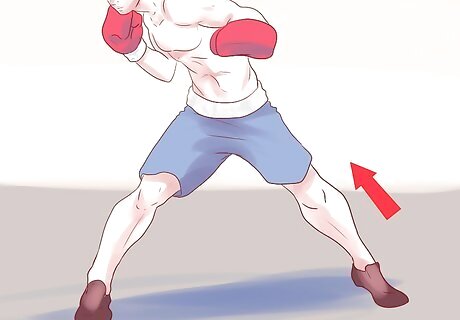
Move your whole body. The importance of using your whole body to throw a punch, and not just your arm, can't be overstated. Although you can move your arm more quickly when you don't have to spin your body, your punch will be much less powerful if you use your arm alone. Using your leg muscles will enable you to generate power and speed when you punch. The leg muscles are the largest and strongest in your body, and they should be behind every punch. Remember not to lift your feet from the ground when you punch, since it throws you off balance and takes away some of your power. Stay quick on your feet, but keep them close to the ground.
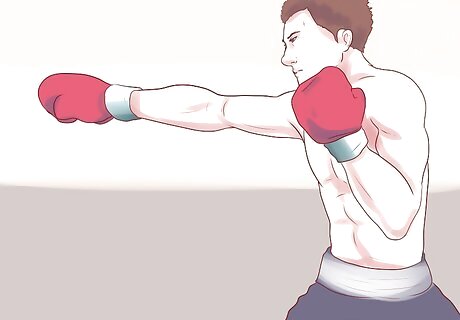
Punch from different angles. When you're in a fight, you won't punch the exact same way every time. Learn to determine which type of punch will be the most powerful in any given situation. Work on mastering the following basic punching angles in order to up your fighting ante: Right or left cross: This is one of the most powerful punches. If you're punching with your right hand, your left foot should be dropped back; the opposite is true if you're punching with your left hand. Rotate your body sharply as you punch. Jab, or front punch: For this one, start with your punching foot forward. If you're punching with your right hand, your right foot should be forward, and the opposite is true if you're punching with your left hand. Shift your weight slightly forward and rotate your arm inward slightly as you punch. Be sure you don't have to overreach. Left or right hook: If you're throwing a left hook, your entire body should rotate to the right as you punch. Your right heel drops as your left heel lifts when you whip out your arm. Take the opposite approach if you're throwing a right hook. Uppercut: As you punch, turn your fist so that the palm is facing up, and punch from the waist upward in a diagonal motion. The punch is more powerful if you throw it on the diagonal.
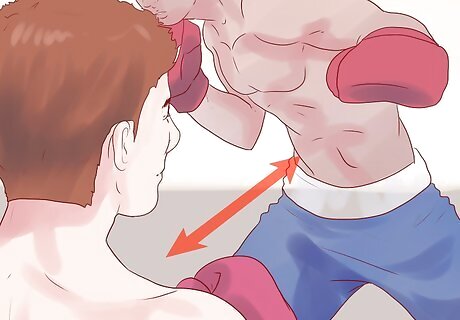
Get the timing right. Since distance is so important when you want to throw your hardest punch, it's important to realize that not every punch is going to be your hardest. When you're a little out of range, you might have to throw some less powerful punches as you attempt to find the right positioning for a more powerful punch. The following circumstances are good times to get into position for your strongest punch: When your opponent is in the act of punching, since he'll be more focused on that than on what you're doing. When he's caught off guard. You can create this situation by punching in an irregular rhythm or using unexpected angles. When he's stunned by a previous punch. Try starting with a quick jab to set yourself up for a powerful right cross.
Training to Achieve a Better Punch
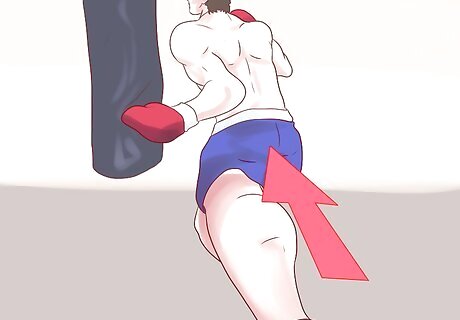
Practice punching slow. The most powerful punches aren't actually the fastest ones. Your arm can move more quickly than the rest of your body, so waiting for your body to catch up to a punch slows the punch down. Even though a powerful punch is a slower one, there will be moments when you have just enough time to execute a slow but extremely forceful punch. It's worth practicing punching at a slower speed so you can feel the full power that comes when you give your body time to get behind your fist. Try punching at half speed when you're training. Force yourself to slow down and focus on using your leg muscles and torso to maximize your power. Remember where that power came from when you speed things up. While you'd never punch at half speed during a match, you can focus on using your legs and torso to generate as much power as possible. EXPERT TIP Asher Smiley Asher Smiley Self Defense Trainer Asher Smiley is the Owner and Lead Instructor at Krav Maga Revolution in Petaluma, California. Asher has earned a Tier 1 Instructor Certification in the American Krav Maga system. In 2017, he trained with the International Kapap Federation Combat Krav Maga International, completing their 7 day tactical seminar and the 8 day CKMI instructor course. Asher Smiley Asher Smiley Self Defense Trainer Avoid training with resistance bands to learn correct form. When using a resistance band, you're not able to throw your punch in the correct technical form. You're building up your muscles, but it is slightly different. You're not hitting precisely in the way you might think you are.
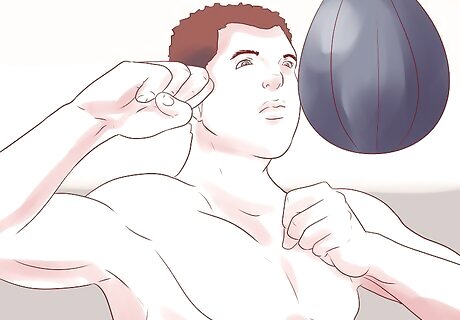
Practice with a speed bag. Speed is as important as power, since if you're too slow your opponent will have time to throw a lot more punches. Train with a speed bag and see how fast your arms can fly. Be sure to use the proper form and remember to keep your thumb tucked away from your knuckles as you punch. The biggest part of the speed bag, the belly, should be hung at the same height as your nose. Hanging it too high will cause you to use improper form when you're training. Focus on keeping the bag constantly in motion and always under your control. Start slow, alternating punching with your right and left arm. As you gain control, speed up your punching.
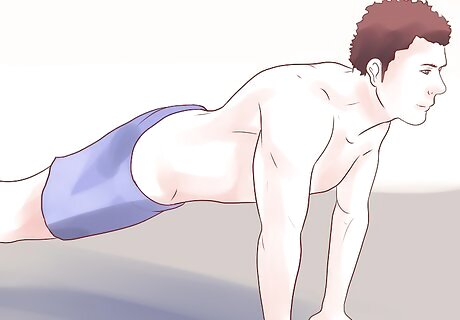
Keep your strength training in check. Doing some amount of strength training is a good way to keep your body in the best shape possible, but strength training alone doesn't make you a stronger or quicker boxer. You need to train your muscles to punch by punching, not lifting weights. That said, it's a good idea to have a strength training routine that strengthens your legs and core for maximum power. Try deadlifts to build overall body strength in your legs, torso and arms. Squats, push ups, and pull ups are good exercises for building strength that translates well to better punches.
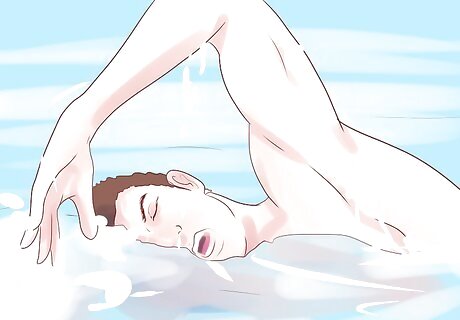
Do cardio exercises. The best cardio workouts for building the kind of fitness you need to be a good boxer are swimming and jumping rope. When you need a break from regular training, look to these cardio workouts as good alternatives. Running, biking, and other cardio workouts are beneficial, but they don't build strength that specifically aids your body when you want to punch hard during a boxing match.
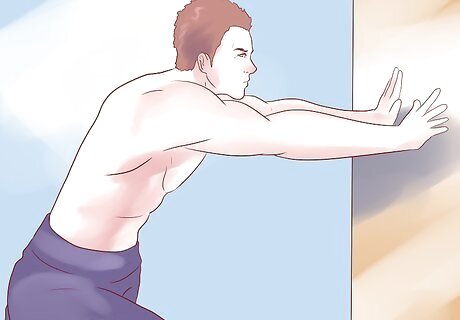
Try isometric training. An isometric muscle contraction happens with the muscle contracts without changing length. You can practice this type of contraction by pushing as hard as you can against a stationary object, like a wall. Using isometric training to exercise your arms teaches your body to store strength that can be quickly whipped out at maximum capacity. Try this routine to work out your arms: Make a fist and push it into a wall as hard as you can. Use your entire body to push your fist for 10 seconds, then repeat with the other hand. Try doing 15 reps and 3 sets per arm per training session. Doing this exercise every other day will strengthen your muscles.











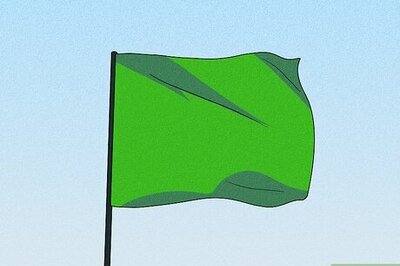

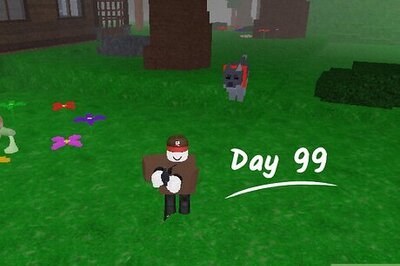



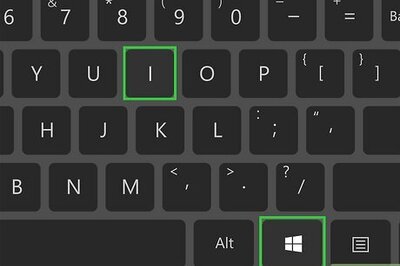
Comments
0 comment